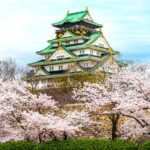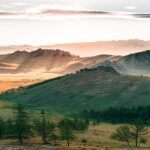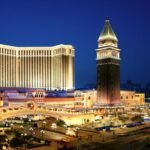
- arrow_back Accueil
- keyboard_arrow_rightBest time to travel to India
Best time to travel to India

Best time to travel to India, a land of remarkable diversity and cultural richness, offers an array of experiences ranging from the snow-capped Himalayas in the north to the sun-drenched beaches of the south. With such varied geography and climate, determining the best time to visit India can be a complex decision. This guide aims to demystify the seasonal variations across different regions of India, highlighting the optimal times for travel based on weather patterns, cultural festivals, and regional attractions.
Understanding India’s Climate
India’s climate can be broadly categorized into three seasons: summer, monsoon, and winter. Each season brings its own beauty and challenges, affecting the ideal travel times for different regions.
Summer (March to June)
Summer in India is hot, with temperatures ranging from 25°C (77°F) to 45°C (113°F) in many parts. While the northern plains and southern regions experience high heat, this season is perfect for visiting the cooler hill stations, such as Shimla, Manali, and Darjeeling. The summer also marks the beginning of the tourist season in Ladakh, a high-altitude desert in the Himalayas, known for its stunning landscapes and Buddhist monasteries.
Monsoon (July to September)
The monsoon season brings heavy rainfall to most of the country, rejuvenating the landscape and filling rivers and lakes. While travel can be challenging during this time due to potential flooding and disruptions, the monsoon also offers unique experiences. The Western Ghats and northeastern states like Meghalaya, known as some of the wettest places on earth, are lush and green, offering breathtaking views.
Winter (October to March)
Winter is widely regarded as the best time to travel to India, especially for exploring the northern and central regions. The weather is mild and pleasant, with temperatures ranging from 10°C (50°F) to 25°C (77°F), ideal for sightseeing and outdoor activities. This season is perfect for visiting the Golden Triangle (Delhi, Agra, and Jaipur), the beaches of Goa, the backwaters of Kerala, and the wildlife sanctuaries across the country.
Peak Tourist Season
The peak tourist season in India coincides with the winter months, especially from November to February, when the weather is most favorable. Major festivals like Diwali (October/November) and Holi (March) offer travelers a chance to experience India’s vibrant cultural traditions. However, this period also sees higher prices and crowded attractions. Booking accommodations and travel arrangements in advance is advisable during this peak season.
Regional Considerations
North India
Best visited from October to March, North India is home to iconic attractions like the Taj Mahal, Varanasi’s ghats, and the forts and palaces of Rajasthan. Winter provides relief from the summer heat, making it the ideal time for exploring this region’s rich history and culture.
South India
South India, with its tropical climate, is best visited during the winter months. However, if you’re interested in experiencing the monsoon, visiting Kerala between June and August can be magical, as the region comes alive with lush greenery.
East and Northeast India
The best time to visit the eastern states, including West Bengal, Odisha, and the northeastern states, is from October to April. These months offer pleasant weather, ideal for exploring the region’s hills, beaches, and cultural sites.
West India
States like Gujarat and Maharashtra are best explored from November to February when the weather is cooler. This period is also great for visiting the desert state of Rajasthan and enjoying its fairs and festivals, such as the Pushkar Camel Fair in November.
Cultural Festivals and Events
Best time to travel to India : his calendar is packed with festivals that offer insights into its rich cultural tapestry. Planning your visit around these festivals can provide a deeper understanding of Indian traditions and make your trip even more memorable. Some notable festivals include:
- Diwali: The festival of lights celebrated across India, marking the victory of light over darkness.
- Holi: The festival of colors, celebrating the arrival of spring and the victory of good over evil.
- Pushkar Camel Fair: A vibrant livestock fair and cultural festival held in the town of Pushkar, Rajasthan.
Travel Tips for India
- Stay Hydrated: Always drink bottled or purified water to stay hydrated, especially during the hot summer months.
- Respect Local Customs: India is a country with diverse religions and cultures. Dress modestly and be respectful of local traditions and customs.
- Plan for the Season: Pack appropriate clothing based on the region and season of your visit. Light cotton clothes are best for summer, while layers are recommended for the cooler winter months.
Summary
The best time to travel to India depends largely on the regions you plan to visit and the experiences you wish to have. Winter (October to March) offers the most comfortable climate for exploring the majority of the country, including its festivals, historical sites, and natural beauty. However, the summer and monsoon seasons also present unique opportunities to explore India’s diverse landscapes and cultural offerings. By considering the climate, regional attractions, and cultural events, you can plan an unforgettable journey to this incredible country, rich in history, culture, and natural wonders.
Popular
- Thailand
- Vietnam
- Dubai
- Bali
- Autour du globe
- Terms-conditions
- Contacts
- Privacy-policy
- About US
About us
Are you ready to trade the everyday for extraordinary experiences? This travel blog is your one-stop shop for crafting the perfect summer escape.
Contact us : info@coyotrip.com











